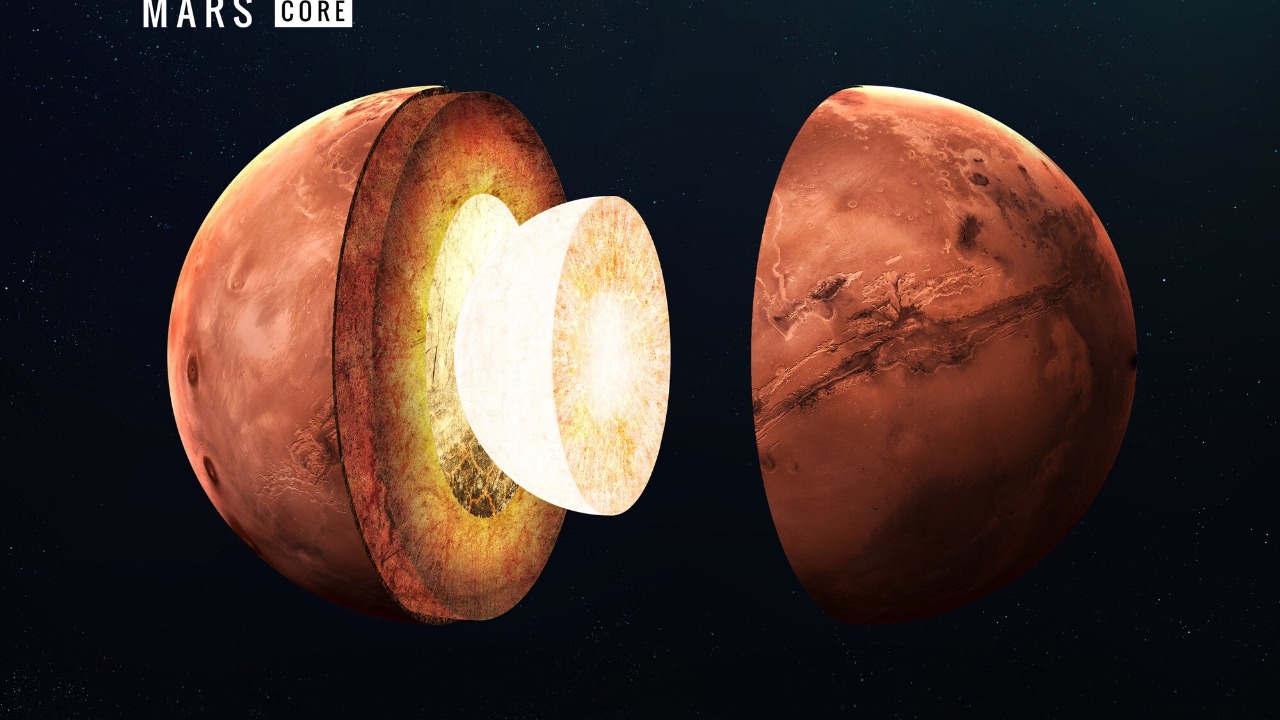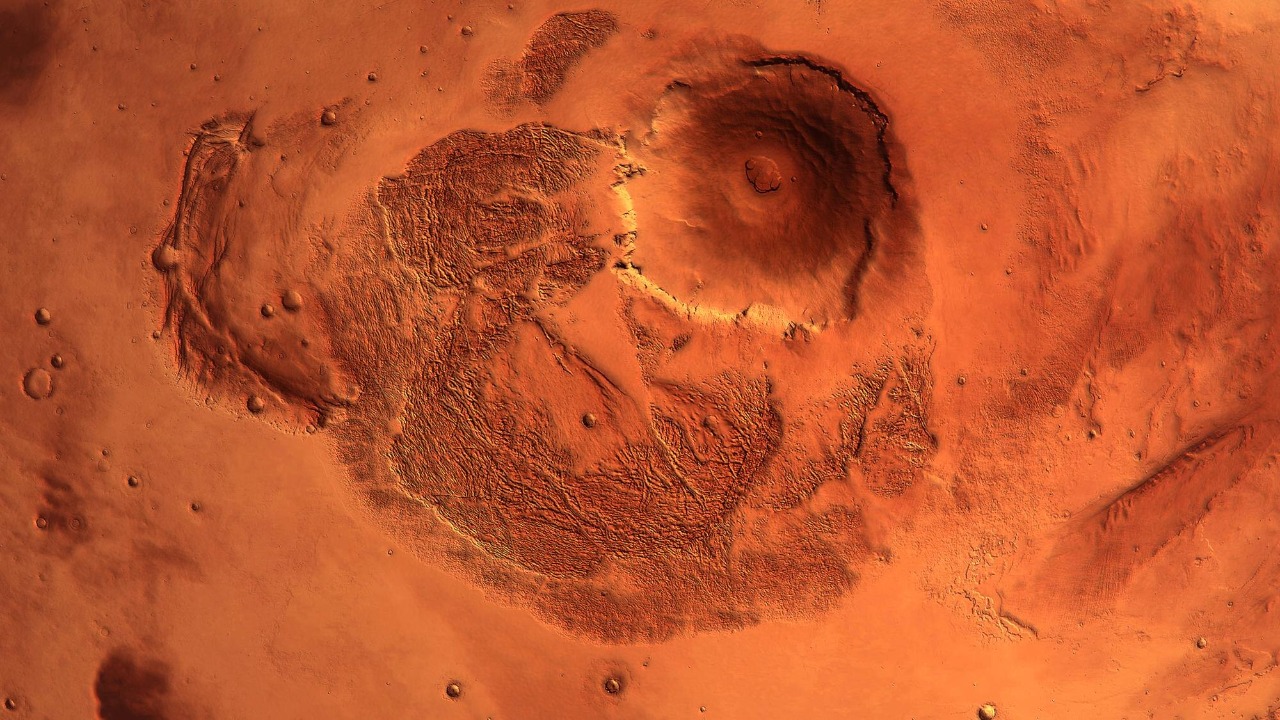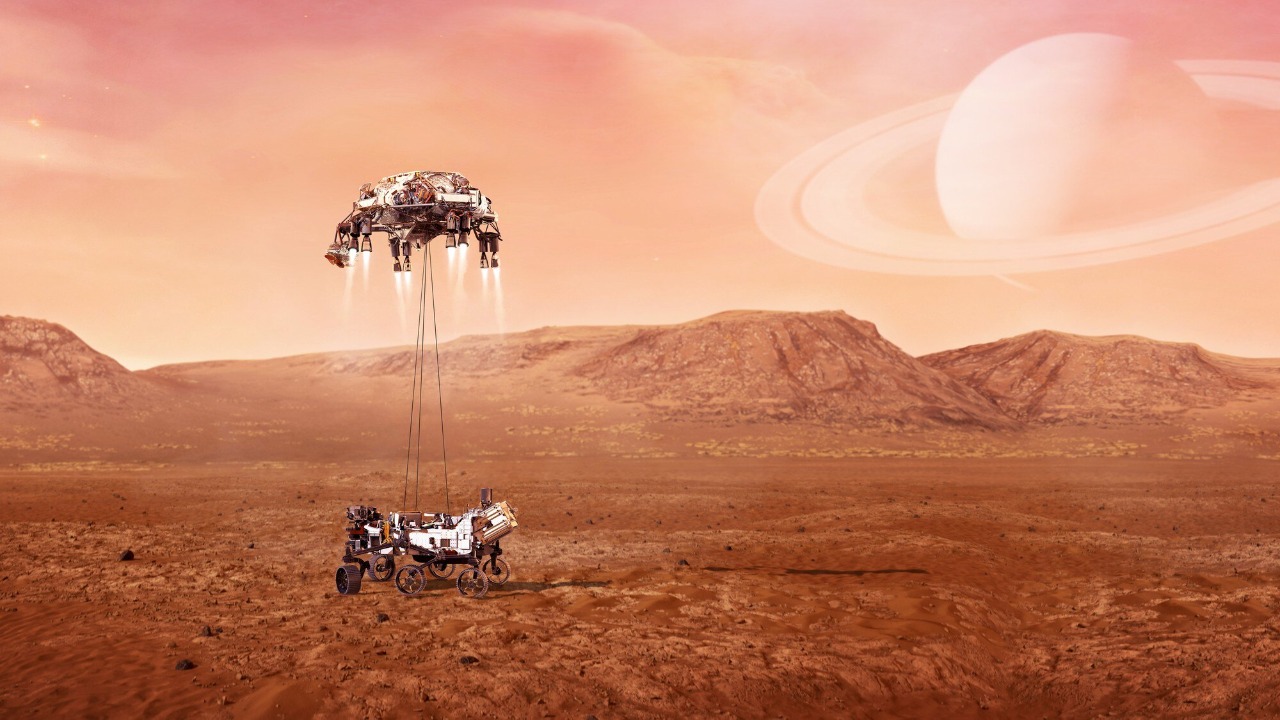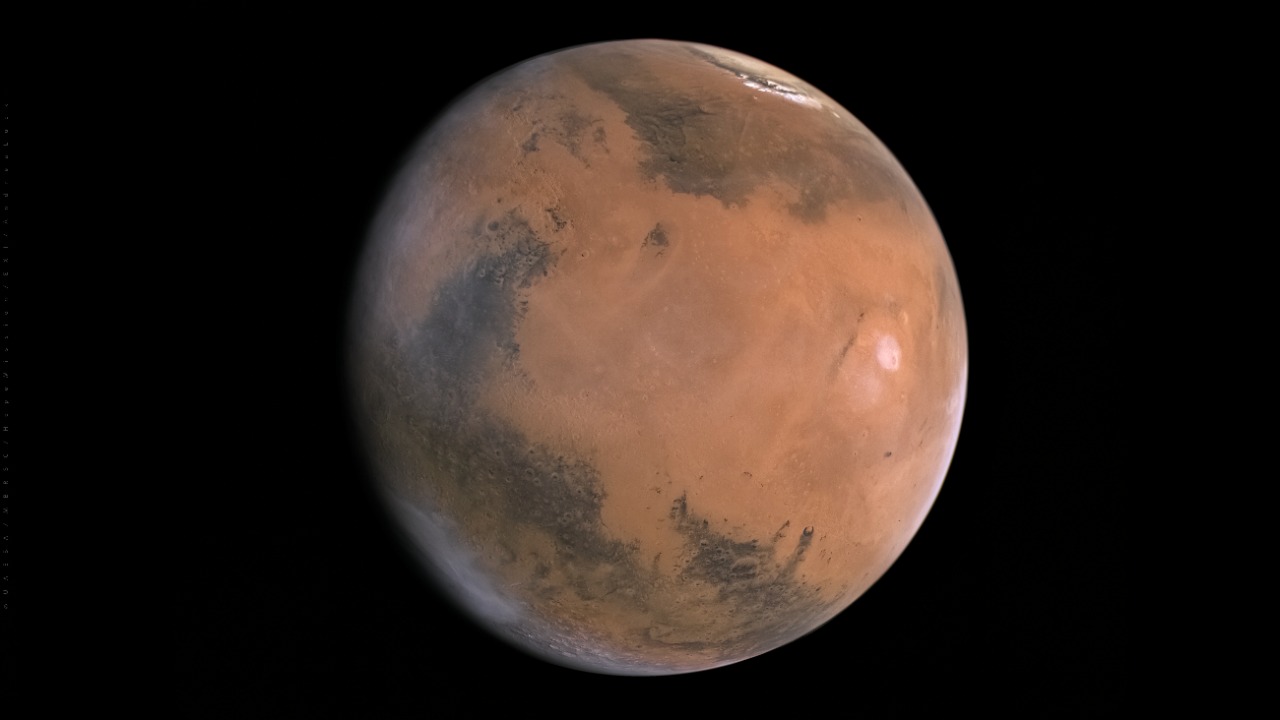
Recent discoveries have revealed that Mars’ core may be heating up unexpectedly, challenging long-held assumptions about the Red Planet’s geology. As scientists delve into the data collected from various missions, including NASA’s InSight lander, they are uncovering surprising insights that could reshape our understanding of Mars’ internal dynamics and its geological history.
Understanding Mars’ Core

Composition and Structure
The composition and structure of Mars’ core have long been subjects of scientific curiosity and debate. Current understanding suggests that the Martian core is composed primarily of iron, nickel, and sulfur, similar to Earth’s core but with distinct differences. Recent studies indicate that Mars’ core is smaller and possibly encased in a sea of molten rock, which could have significant implications for its geological behavior. Unlike Earth, Mars lacks a global magnetic field, a fact that has puzzled scientists for decades. This absence is attributed to the core’s inability to sustain the kind of convection that drives Earth’s magnetic dynamo.
These differences between Mars’ core and Earth’s core provide valuable insights into planetary geology. By studying Mars, scientists can better understand the diverse processes that shape planetary evolution. The presence of molten rock in Mars’ core suggests that it may still be geologically active, contrary to previous assumptions. This activity could have far-reaching effects on the planet’s surface and atmosphere, influencing everything from volcanic eruptions to atmospheric composition.
Recent Discoveries
Recent findings from the InSight mission have provided compelling evidence that Mars’ core is not as cool as once thought. The mission’s seismic data has revealed unexpected seismic activity, offering clues about the core’s state. InSight’s seismometer detected marsquakes that suggest the presence of liquid rock beneath the planet’s surface. This discovery challenges previous models that portrayed Mars as a geologically inactive planet.
Seismic activity plays a crucial role in understanding a planet’s internal structure. On Earth, earthquakes help scientists map the interior by analyzing how seismic waves travel through different layers. Similarly, marsquakes are providing valuable data about Mars’ internal dynamics. The seismic signals captured by InSight have led scientists to conclude that Mars’ core may be warmer and more dynamic than previously believed, opening new avenues for research into the planet’s geological history.
Potential Causes of Heating

Radioactive Decay
One possible explanation for the unexpected heating of Mars’ core is radioactive decay. This process involves the breakdown of radioactive isotopes, releasing heat in the process. On Earth, radioactive decay is a significant source of internal heat, contributing to the planet’s geothermal activity. It is plausible that similar mechanisms are at play within Mars’ core, contributing to the observed increase in temperature.
Comparisons with Earth’s core heating mechanisms provide valuable context. While Earth’s core remains hot due to both radioactive decay and residual heat from its formation, Mars’ smaller size and different composition suggest a more complex thermal history. Scientists are investigating whether radioactive isotopes, such as uranium, thorium, and potassium, could be contributing to the heating observed on Mars. Understanding these processes is crucial for unraveling the mysteries of Mars’ internal dynamics and its potential for geological activity.
Gravitational Interactions
Another potential factor in Mars’ core heating is gravitational interactions with its moons, Phobos and Deimos. These celestial bodies exert tidal forces on Mars, similar to how the Moon affects Earth’s tides. These interactions can generate heat through a process known as tidal heating, where gravitational forces cause friction and deformation within the planet’s interior.
Investigating the role of tidal heating in Mars’ internal heat balance is an ongoing area of research. While the effects of Phobos and Deimos are less pronounced than those of Earth’s Moon, they could still contribute to the warming of Mars’ core. Assessing the likelihood of tidal heating playing a significant role requires a deeper understanding of the gravitational interactions between Mars and its moons. By studying these dynamics, scientists hope to gain insights into the complex processes that drive planetary heating and evolution.
Implications for Mars’ Geological History

Volcanic Activity
The potential for renewed volcanic activity on Mars due to increased core temperatures is an exciting prospect for scientists. Mars is home to some of the largest volcanoes in the solar system, including Olympus Mons, the tallest volcano known. If the core is indeed heating up, it could lead to renewed volcanic activity, altering the planet’s surface and atmosphere over time.
Renewed volcanic activity could have significant implications for Mars’ geological history. Volcanic eruptions could release gases into the atmosphere, potentially affecting its composition and climate. Additionally, volcanic activity could reshape the Martian landscape, creating new geological features and altering existing ones. Understanding the potential for volcanic activity on Mars is crucial for reconstructing the planet’s past and predicting its future.
Magnetic Field and Habitability
A heated core could also impact Mars’ magnetic field, with potential implications for the planet’s habitability. Mars once had a magnetic field, but it dissipated billions of years ago, leaving the planet vulnerable to solar radiation. If the core is heating up, it could lead to the reformation of a magnetic field, albeit on a smaller scale than Earth’s.
The presence or absence of a magnetic field has significant implications for Mars’ habitability. A strengthened magnetic field could protect the planet from harmful solar and cosmic radiation, creating more favorable conditions for life. Conversely, a weakened or absent magnetic field could leave the planet exposed to radiation, posing challenges for future human exploration and colonization efforts. Understanding the relationship between Mars’ core heating and its magnetic field is essential for assessing the planet’s potential for supporting life, both past and present.
Future Research and Exploration

Technological Advancements
Advancing our understanding of Mars’ core will require cutting-edge technologies and innovative exploration strategies. Future missions will likely involve advanced landers and rovers equipped with sophisticated instruments to probe the planet’s interior. These tools will be essential for gathering more data about Mars’ internal structure and dynamics.
Ongoing and upcoming missions, such as the European Space Agency’s ExoMars program and NASA’s Mars Sample Return mission, aim to build on the knowledge gained from InSight and other missions. These initiatives will leverage new technologies and methodologies to explore Mars’ core in greater detail. By deploying advanced instruments, such as ground-penetrating radar and precision seismometers, scientists hope to uncover the secrets of Mars’ internal heat and its implications for the planet’s evolution.
International Collaboration
Uncovering the mysteries of Mars’ core will require international collaboration and cooperation among space agencies worldwide. Partnerships between organizations like NASA, the European Space Agency (ESA), and other global counterparts are crucial for pooling resources and expertise. By sharing data and insights, scientists can accelerate the pace of discovery and gain a more comprehensive understanding of Mars’ internal dynamics.
International collaboration is not only beneficial for scientific advancement but also for fostering goodwill and cooperation among nations. By working together on ambitious projects, space agencies can tackle complex challenges and achieve breakthroughs that would be difficult to accomplish alone. The collaborative efforts to explore Mars’ core exemplify the power of global cooperation in advancing our knowledge of the universe.
The Bigger Picture

Comparative Planetology
The unexpected heating of Mars’ core offers valuable insights into planetary formation and evolution across the solar system. By studying Mars, scientists can draw parallels and contrasts with other celestial bodies, gaining a deeper understanding of the processes that shape planets and moons. Comparative planetology allows scientists to explore the diversity of planetary systems and develop models that explain their formation and development.
Insights gained from Mars can inform our understanding of other celestial bodies, such as Venus, Mercury, and even exoplanets beyond our solar system. By comparing and contrasting the characteristics of different planets, scientists can refine theories of planetary evolution and gain a more comprehensive view of the universe. The study of Mars’ core heating is a crucial piece of the puzzle in unraveling the mysteries of planetary science.
Human Exploration
The findings about Mars’ core heating have significant implications for future human missions to the Red Planet. Understanding the planet’s internal dynamics is essential for planning safe and successful missions. Increased core temperatures could affect surface conditions, such as volcanic activity and radiation levels, posing both challenges and opportunities for astronauts and researchers.
As space agencies and private companies plan for human exploration and potential colonization of Mars, understanding the planet’s core dynamics will be crucial. The challenges posed by a changing Martian core will need to be addressed to ensure the safety and success of future missions. At the same time, the opportunities presented by a geologically active Mars could open new avenues for scientific discovery and exploration. By studying the planet’s core, scientists and explorers can better prepare for the challenges and opportunities that lie ahead on the Red Planet.